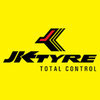Filter interviews by
Lucas-TVS Quality Manager Interview Questions and Answers
Lucas-TVS Quality Manager Interview Experiences
1 interview found
(1 Question)
- Q1. What project you handle in previous company
- Ans.
Implemented a quality improvement project to reduce defects in the production line.
Analyzed root causes of defects
Implemented process improvements
Trained staff on quality control measures
Interview Preparation Tips
Top trending discussions






Interview questions from similar companies

I applied via Naukri.com and was interviewed in Dec 2020. There were 3 interview rounds.
Interview Questionnaire
1 Question
- Q1. I am b.tech camplite in mechanical engineering in 2019 pass out if any requirement in quality engineer
Interview Preparation Tips

I applied via Recruitment Consultant and was interviewed before Jan 2021. There was 1 interview round.
Interview Questionnaire
3 Questions
- Q1. How many level in ppap
- Ans.
There are 5 levels in PPAP (Production Part Approval Process).
PPAP has 5 levels: Level 1, Level 2, Level 3, Level 4, and Level 5.
Each level represents a different stage of the PPAP process.
Level 1 includes documentation submission, while Level 5 involves customer approval.
The higher the level, the more comprehensive the PPAP requirements become.
PPAP is used to ensure that suppliers meet the quality standards of their c...
- Q2. Difference between cp and cpk
- Ans.
Cp measures the capability of a process to meet specifications, while Cpk measures the capability of a process to meet specifications considering centering.
Cp is a short-term capability index, while Cpk is a long-term capability index.
Cp considers only the spread of the process, while Cpk considers both the spread and the centering of the process.
Cp is calculated using the formula Cp = (USL - LSL) / (6 * standard devia...
- Q3. What is capa
- Ans.
CAPA stands for Corrective and Preventive Action. It is a systematic approach to identify, investigate, and resolve quality issues.
CAPA is a key component of quality management systems.
It involves identifying the root cause of a problem, implementing corrective actions to address the immediate issue, and preventive actions to prevent recurrence.
CAPA processes typically include steps like problem identification, investi...
Interview Preparation Tips

I applied via Referral and was interviewed in Dec 2019. There were 5 interview rounds.
Interview Questionnaire
3 Questions
- Q1. What is 10:1 rule
- Ans.
The 10:1 rule is a guideline used in quality engineering to determine the sample size needed for statistical analysis.
The 10:1 rule states that for every 1 defect found, there are approximately 10 defects that have gone undetected.
It helps in estimating the total number of defects in a population based on the number of defects found in a sample.
The rule is often used in quality control processes to determine the approp...
- Q2. Standard temp of Quality lab
- Ans.
The standard temperature of a Quality lab is typically maintained at 20-25 degrees Celsius.
The standard temperature range for a Quality lab is 20-25 degrees Celsius.
Maintaining a consistent temperature is important for accurate testing and measurements.
Temperature control systems such as air conditioning or heating may be used to regulate the lab temperature.
Extreme temperatures can affect the performance of lab equipm...
- Q3. About process and product audit
Interview Preparation Tips

Interview Questionnaire
1 Question
- Q1. Genral diploma mechanical Related question

Interview Questionnaire
2 Questions
- Q1. Tell me about yourself, family background technical questions in our course
- Q2. Strength and weekness
Interview Preparation Tips
Eye contact is important

Interview Questionnaire
2 Questions
- Q1. No one Question asked.
- Q2. It is Direct joining because of Training.

I applied via Walk-in


Interview Preparation Tips

I applied via Walk-in and was interviewed in Oct 2023. There were 3 interview rounds.

(2 Questions)
- Q1. What is the function of alternator &stator
- Ans.
The alternator generates electricity to power the vehicle's electrical system, while the stator is a stationary component that helps produce electricity in the alternator.
Alternator converts mechanical energy into electrical energy
Stator is a stationary part of the alternator
Stator contains wire windings that produce electricity when the rotor spins
Alternator charges the battery and powers the electrical system of the ...
- Q2. What is winding
- Ans.
Winding is the process of wrapping a material around a core or spool to create a coil or roll.
Winding is commonly used in the manufacturing of electrical coils, transformers, inductors, and motors.
The material being wound can be wire, thread, yarn, tape, or any other flexible material.
The winding process can be done manually or using automated machinery.
Examples include winding copper wire around a bobbin to create a t...
(2 Questions)
- Q1. What is alternator &stator
- Ans.
An alternator is a device that converts mechanical energy into electrical energy, while a stator is the stationary part of a rotary system.
Alternator is used in vehicles to charge the battery and power the electrical system
Stator is the stationary part of an electric motor or generator
Alternator produces alternating current (AC) while stator helps in generating a magnetic field
- Q2. What is 52wh word
- Ans.
52wh word is a term used in quality engineering to refer to a specific type of problem-solving technique.
52wh word stands for Who, What, Where, When, Why, How, How much, How many, and How often.
It is used to systematically analyze a problem by asking these key questions.
For example, when faced with a quality issue in a manufacturing process, a quality engineer may use the 52wh word technique to identify the root cause ...
Interview Preparation Tips

I applied via Job Portal and was interviewed in Nov 2022. There were 2 interview rounds.

(4 Questions)
- Q1. Wiring harness regards Ani questions
- Q2. Quality inn express is for years
- Ans.
For years quality work Experience
- Q3. Wiring harness prosis
- Ans.
Atokote to mykote
Mykote pas setting se leke packing done ✅
- Q4. Wiring harness quality
- Ans. Quality 100% very fairy
Interview Preparation Tips
- Quality
- Production
- Development
Veth quality A to Z
Lucas-TVS Interview FAQs
Tell us how to improve this page.
Lucas-TVS Interviews By Designations
- Lucas-TVS Quality Engineer Interview Questions
- Lucas-TVS Engineer Interview Questions
- Lucas-TVS Production Interview Questions
- Lucas-TVS Sales Officer Interview Questions
- Lucas-TVS Trainee Interview Questions
- Lucas-TVS Electrical Maintenance Engineer Interview Questions
- Lucas-TVS Electrical Engineer Interview Questions
- Lucas-TVS Key Account Manager Interview Questions
- Show more
Interview Questions for Popular Designations
Overall Interview Experience Rating
based on 1 interview experience
Interview Questions from Similar Companies
Lucas-TVS Quality Manager Reviews and Ratings
based on 1 review
Rating in categories
|
Quality Engineer
193
salaries
| ₹2.2 L/yr - ₹6.8 L/yr |
|
Engineer
175
salaries
| ₹3.2 L/yr - ₹7.1 L/yr |
|
Production Engineer
164
salaries
| ₹1 L/yr - ₹7.4 L/yr |
|
Senior Engineer
162
salaries
| ₹4.9 L/yr - ₹10.5 L/yr |
|
Assistant Manager
111
salaries
| ₹6 L/yr - ₹14 L/yr |

Bosch

Ceat Tyres

UNO Minda

Apollo Tyres
- Home >
- Interviews >
- Lucas-TVS Interview Questions












